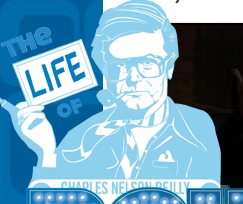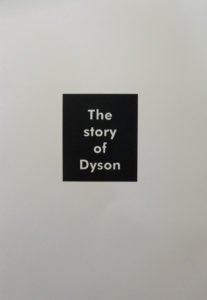I’ve been fascinated with Scott Schwertly’s company, Ethos3 Communications, for quite some time, having first blogged about the firm two years ago. It’s one of a small handful of companies that create dazzling presentation designs emphasizing storytelling. Ethos3’s slideshow “Storytelling 101” has enjoyed tremendous buzz (I mentioned it here). It’s a great privilege to present this Q&A with Scott.
Bio: Scott Schwertly is an epic storyteller. Today, he owns and operates Ethos3 Communications, a Nashville, TN-based presentation boutique providing professional presentation design and training for national and international clients ranging from Fortune 100 companies to branded individuals like Guy Kawasaki.
He may live in Nashville, TN, with his wife and three dogs, but he calls San Diego home — the place of his beloved San Diego Chargers. Scott has a B.A. and M.B.A. from Harding University.
Q&A with Scott Schwertly:
Q: A story practitioner colleague follows this formula for presentations: “3 stories, 3 points, sit down.” To what extent do you feel formulas like that are useful for presentations?
A: I am actually a big believer in formulas. For instance, I love the rule of 3’s. Think about it: Most presentations are done in 3’s. For instance, you should always have a beginning, middle, and end. Here’s another example: Aristotle talked about the importance of 3 things: pathos, logos, and ethos. And, you should have only 3 points in a presentation. After all, the human works like this: “1, 2, 3, I forget.” With that said, I think formulas like the above can go a long way.
Q: In your often-cited slideshow, “Storytelling 101”, you talk about 3 kinds of stories: the Rockstar, the Maverick, and the Sherlock. How did you go about identifying these 3 types of stories? Given that the presentation is 2 years old, have your views about the types of stories that exist evolved?
A: Famous screenwriter Robert McKee talks about how there are more than 20 different storytelling styles to choose from. The unfortunate reality is that this diversity can overwhelm any person who is new to storytelling. Thus, these approaches were my way of creating three simple storytelling techniques that would be easy to learn and could work well in any presentation environment. As of today, they are still getting received very well, and we use them on an everyday basis here at Ethos3 when building presentations for our clients.
Q: Can you talk about the storytelling approach/philosophy in your “The Box” story?
A: “The Box” presentation captures the delicate balance of tension and
discovery. It surprises you at the end with a great “a-ha” moment. That’s what I love about it.
Q: Your slideshows Meet Henry and “Storytelling 101” have won awards in SlideShare’s contests. Meet Henry tells a story, while “Storytelling 101” is about stories. What made these presentations so good and award-worthy?
A: What I like about these presentations is that they can stand alone. They not only work well online but also in a traditional presentation setting as well. They kill two birds with one stone.
A: I love social media. Interesting fact: I haven’t spent a dime on traditional marketing with Ethos3. Everything we have done has been through Facebook, Twitter, LinkedIn, SlideShare, etc. Social media is definitely the way to tell and share your story these days.












